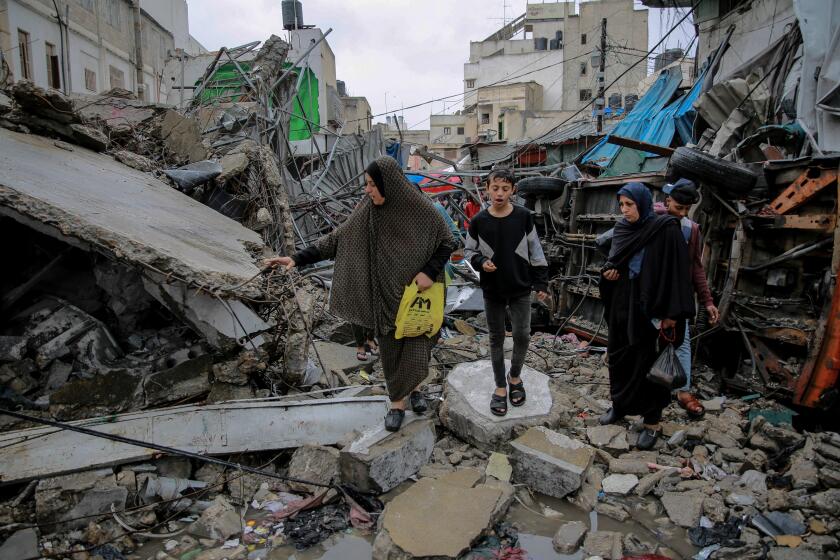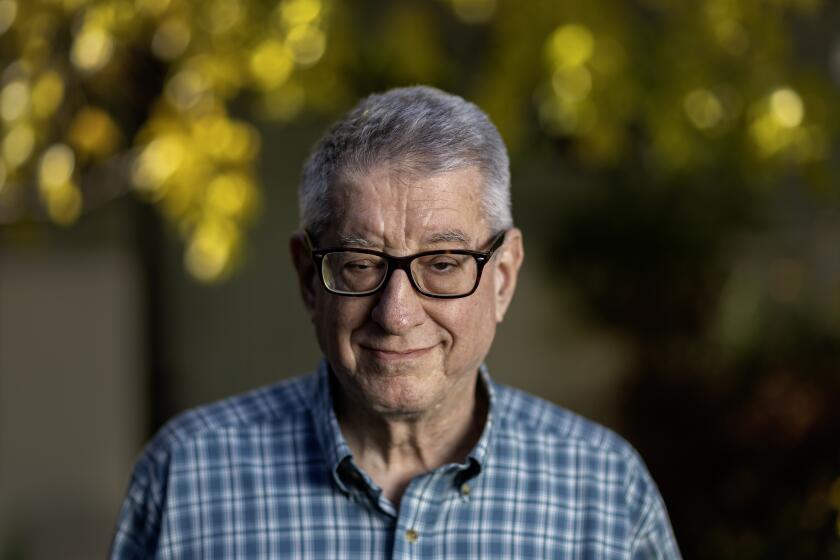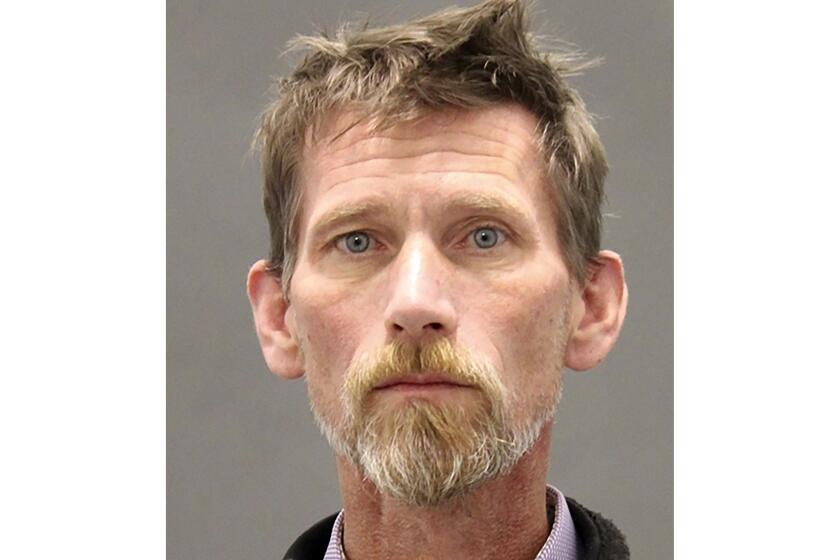
- Share via
DEIR AL BALAH, Gaza Strip — Hamas and Israel released more hostages and prisoners under terms of a fragile cease-fire that held for a fifth day Tuesday as international mediators in Qatar worked to extend the truce and the U.S. urged Israel to better protect Palestinian civilians in Gaza if it follows through on its promise to resume the war.
In the latest swap since the cease-fire began Friday, Israel said 10 of its citizens and two Thai nationals were freed by the militant group Hamas and had been returned to Israel. Soon after, Israel released 30 Palestinian prisoners. The truce is due to end after one more exchange Wednesday night.
For the first time, Israel and Hamas blamed each other for an exchange of fire between troops and militants in the northern Gaza Strip. There was no immediate indication it would endanger the truce, which has enabled humanitarian aid to flow into the Palestinian territory.
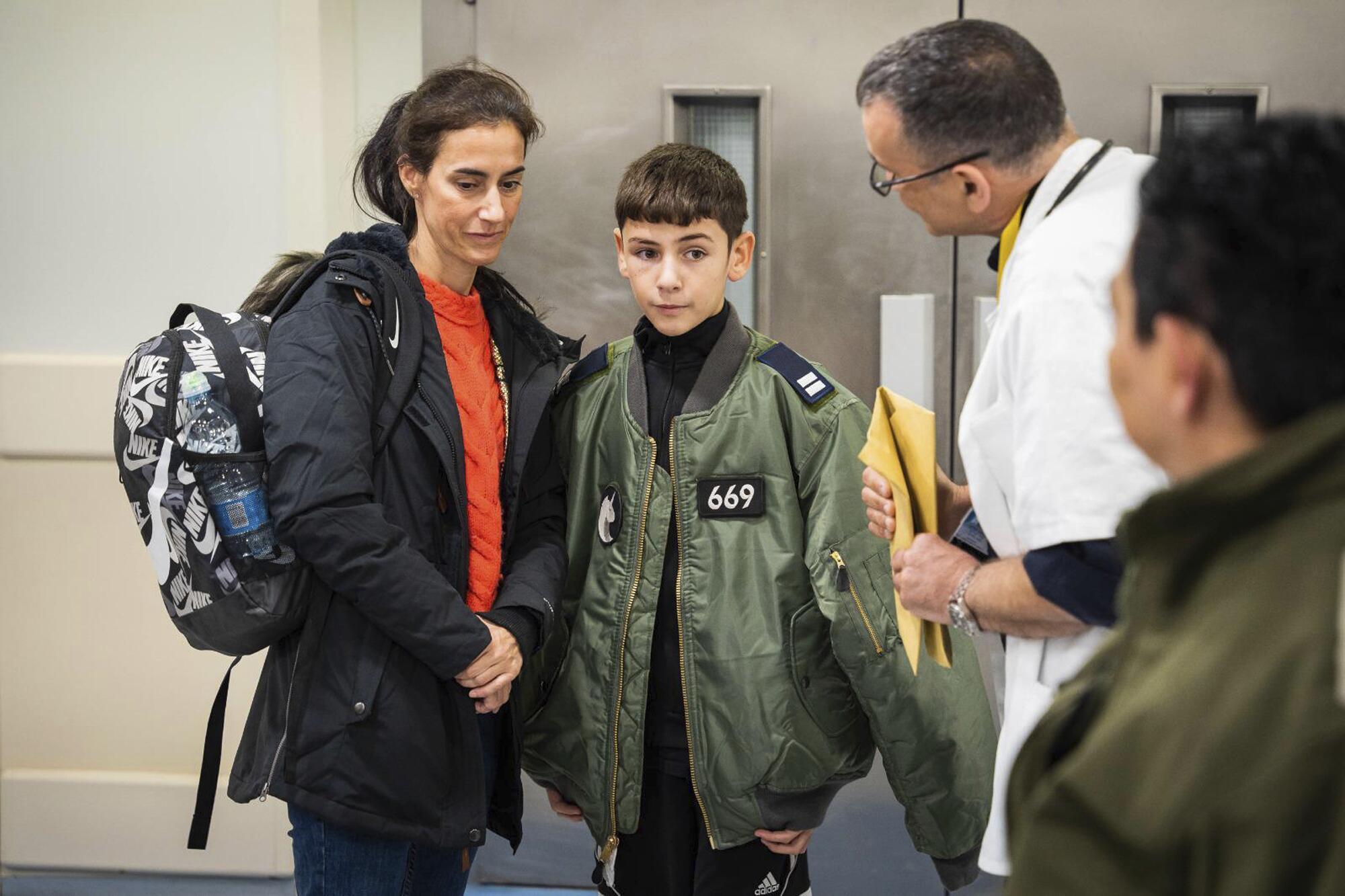
CIA Director William Burns and David Barnea, who heads Israel’s Mossad intelligence agency, were in Qatar, a key mediator with Hamas, to discuss extending the cease-fire and releasing more hostages, a diplomat said, speaking on condition of anonymity because of the sensitivity of the talks.
A U.S. official who confirmed Burns was in Qatar requested anonymity because the CIA chief’s travel plans are not publicized for security reasons. U.S. Secretary of State Antony J. Blinken was set to visit the region this week, also with an eye to extending the truce.
Israel has vowed to resume the war with “full force” to destroy Hamas once it’s clear that no more hostages will be freed under the deal.
Palestinians in the Gaza Strip take note of their losses and stock up on water, food, fuel and other essentials during a pause in fighting.
The Biden administration told Israel that it must avoid “significant further displacement” of and mass casualties among Palestinian civilians if it resumes its offensive, and that it must operate with more precision in southern Gaza than it has in the north, according to U.S. officials. The officials spoke on condition of anonymity under ground rules set by the White House.
Hamas and other militants still hold about 160 hostages out of 240 seized in their Oct. 7 assault in southern Israel that ignited the war. Israel has said it is willing to extend the truce by one day for every 10 additional hostages freed, according to the deal brokered by Qatar, Egypt and the U.S. But Hamas is expected to make much higher demands for the release of Israeli soldiers.
Israel has vowed to end Hamas’ 16-year rule in Gaza and crush its military capabilities. That would almost certainly require expanding its ground offensive from northern Gaza to the south, where most of Gaza’s population of 2.3 million is now crowded. It’s unclear where they would go if Israel does so, as Egypt has refused to accept refugees and Israel has sealed its border.
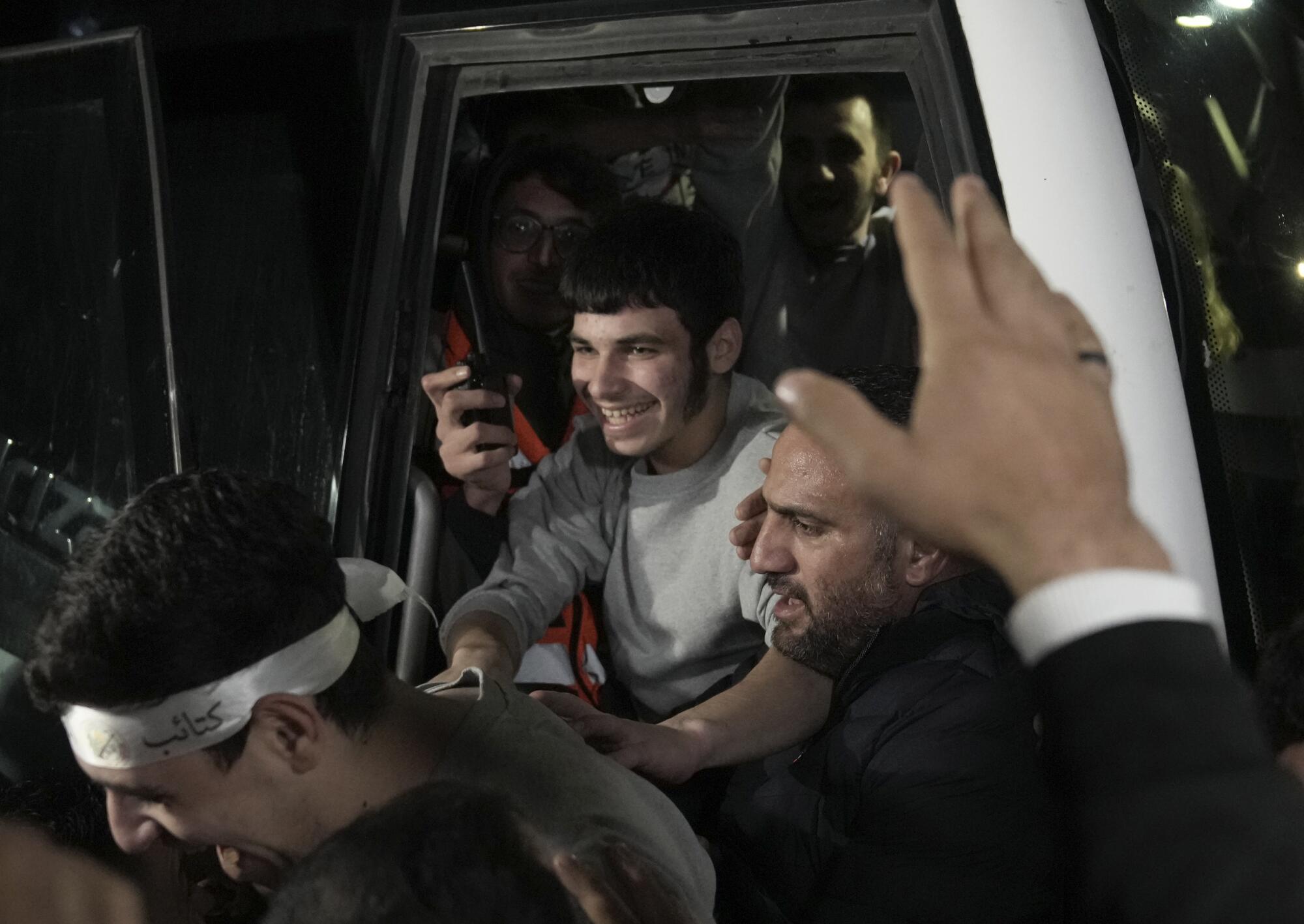
The latest group of Israeli hostages freed — nine women and a 17-year-old — was flown to hospitals in Israel, the Israeli military said.
Tuesday’s hostage release brought to 60 the number of Israelis freed during the truce. An additional 21 hostages — 19 Thais, one Filipino and one Israeli of Russian descent — have been released in separate negotiations since the truce began.
Before the truce, Hamas released four hostages and the Israeli army rescued one. Two other hostages were found dead in Gaza.
The latest swap brought to 180 the number of Palestinian women and teenagers freed from Israeli prisons.
Most have been teenagers accused of throwing stones and firebombs during confrontations with Israeli forces. Several released women had been convicted by Israeli military courts of attempting to carry out deadly attacks. The prisoners are widely seen by Palestinians as heroes resisting occupation.
USC economics professor John Strauss’ remarks about Hamas at a pro-Palestinian protest went viral, igniting debates about censorship, academic freedom and safety.
The freed hostages have mostly stayed out of the public eye, but details of their captivity have started to emerge.
In one of the first interviews with a freed hostage, 78-year-old Ruti Munder told Israel’s Channel 13 television that she was initially fed well in captivity but that conditions worsened as shortages took hold. She said she was kept in a “suffocating” room and slept on plastic chairs with a sheet for nearly 50 days.
Tuesday saw the first major exchange of fire between Israeli troops and Hamas fighters in northern Gaza since the cease-fire began. Each side blamed the other, but no further violence followed and the swap went ahead.
The cease-fire has allowed residents who remained in Gaza City and other parts of the north to venture out to survey the destruction and try to locate and bury relatives.
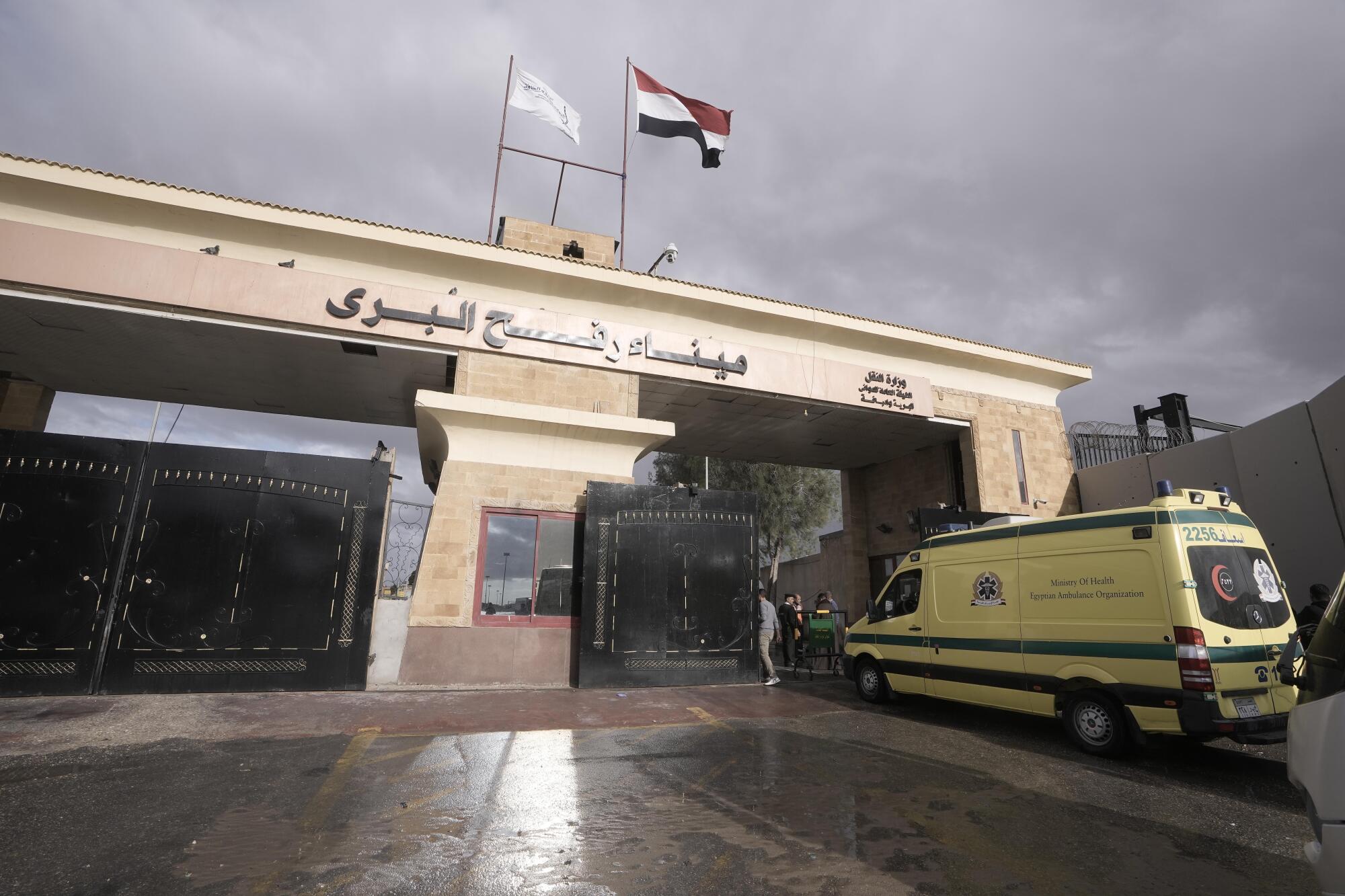
In northern Gaza’s Jabaliya refugee camp, which Israel bombarded heavily for weeks and which troops surrounded in heavy fighting with militants, “you come across whole city blocks that have been demolished, just a pancake of concrete layered as buildings have collapsed,” said Thomas White, the Gaza director of the United Nations agency caring for Palestinian refugees.
The agency delivered six truckloads of aid to the camp, including supplies for a medical center. Video of White’s visit showed streets lined with destroyed buildings and cars and piles of rubble.
A U.N.-led aid consortium estimates that, across Gaza, more than 234,000 homes have been damaged and 46,000 destroyed, amounting to about 60% of the territory’s housing stock. In the north, the destruction “severely compromises the ability to meet basic requirements to sustain life,” it said.
Jason Eaton, 48, was arrested in Burlington, Vt., in connection with the shooting of three college students of Palestinian descent.
More than 13,300 Palestinians have been killed since the war began, roughly two-thirds of them women and minors, according to the Health Ministry in Hamas-ruled Gaza, which does not differentiate between civilians and combatants. At least 1,200 people have been killed on the Israeli side, mostly civilians slain in the initial attack, Israel says.
At least 77 soldiers have been killed in Israel’s ground offensive. Israel says it has killed thousands of militants, without providing evidence.
Authorities were able to reopen the dialysis department at Gaza City’s Shifa Hospital after medical teams brought a small generator. About 20 patients there had gone two or three weeks without dialysis, Dr. Mutasim Salah told Al Jazeera TV from the hospital.
Two weeks ago, Israeli forces seized the hospital, which Israel contended was used as a major base by Hamas, an accusation that the group and hospital staff deny.
Israel’s bombardment and ground offensive have displaced more than 1.8 million people, nearly 80% of Gaza’s population, and most have sought refuge in the south, according to the U.N. Hundreds of thousands of people have packed into U.N.-run schools and other facilities, with many forced to sleep on the streets because of overcrowding. Rain and cold winds have made conditions even more miserable.
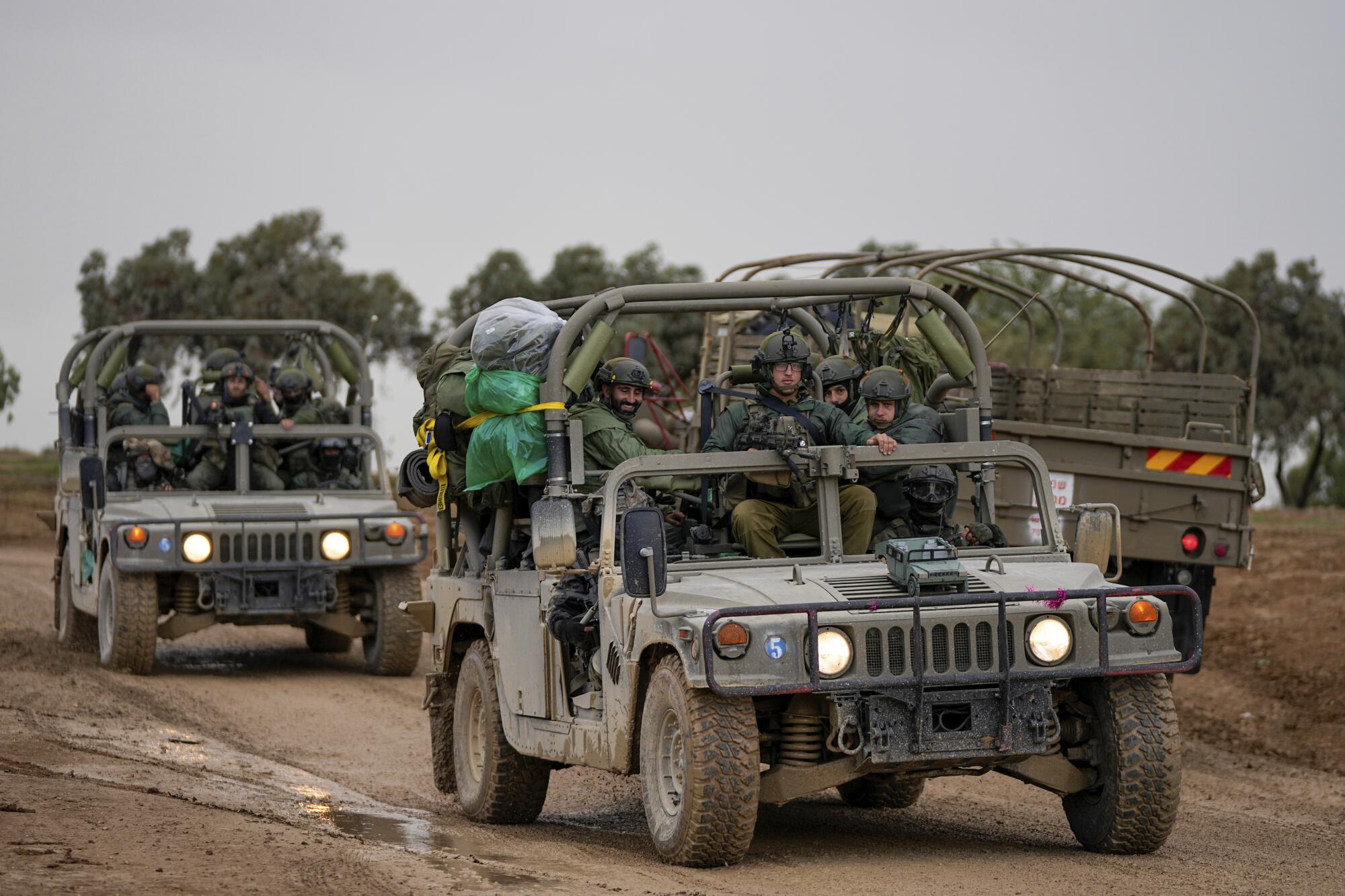
On Tuesday, Hanan Tayeh returned to her destroyed home in the central town of Johor al-Deek, searching for any belongings.
“I came to get anything for my daughters. Winter has come, and I have nothing for them to wear,” she said.
The cease-fire has allowed increased aid, delivered by 160 to 200 trucks a day into Gaza, bringing desperately needed food, water and medicine, as well as fuel for homes, hospitals and water treatment plants. Still, it is less than half what Gaza was importing before the fighting, even as humanitarian needs have soared.
Juliette Toma, a spokesperson for the U.N. agency for Palestinian refugees, said that people come to shelters asking for heavy clothes, mattresses and blankets, and that some are sleeping in damaged vehicles.
“The needs are overwhelming,” she told the Associated Press. “They lost everything, and they need everything.”
Keath and Jeffery reported from Cairo. Associated Press writers Aamer Madhani and Zeke Miller in Washington, Samy Magdy in Cairo, Tia Goldenberg in Tel Aviv, Isabel DeBre in Jerusalem and Jon Gambrell in Dubai contributed to this report.
More to Read
Sign up for Essential California
The most important California stories and recommendations in your inbox every morning.
You may occasionally receive promotional content from the Los Angeles Times.
